Resources for Engineering Life Flipped Course
How did life evolve? How can we understand the principles of biological systems to create new proteins, chemicals, biological structures, cells and tissues? Find the answers to these questions in this course designed by Drs. Ron Vale and James Fraser at UCSF for first- and second-year graduate students.
Intro to Engineering Life Flipped Course
| Title | Video | Concepts | Duration | Video Downloads | Transcript | PDF Resources (Educators Only) |
|---|---|---|---|---|---|---|
|
Session 1: Origins of Life: Protocells and Non-Enzymatic Template-Directed RNA Synthesis
What is the origin of life on Earth? Jack Szostak describes the chemistry that may have allowed life to first evolve. With: Jack Szostak |
All Course Materials for this Session (Educators only) – Created by Kelsey Hass |
|||||
| The Origin of Cellular Life on Earth | 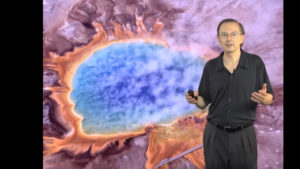
|
Emergence of life, conditions that support life, self-replicating protocell | 54:40 |
Hi-Res Subtitled: |
View Transcript | |
| Protocell Membranes | 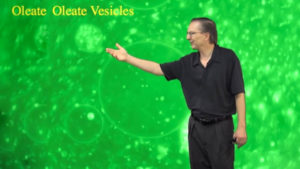
|
Components of a simple protocell | 40:42 |
Hi-Res Subtitled: |
View Transcript | |
| Non-Enzymatic Copying of Nucleic Acid Templates | 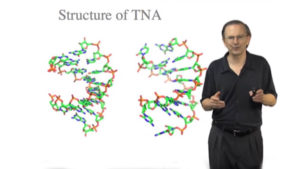
|
Chemical replication of nucleic acid | 53:51 |
Hi-Res Subtitled: |
View Transcript | |
|
Session 2: Microbial Diversity and Evolution
Dianne Newman gives an overview of the immense microbial diversity found on Earth and the importance of microbes to evolution and environmental health. With: Dianne Newman |
All Course Materials for this Session (Educators only) – Created by Jasper Williams |
|||||
| Microbial Diversity and Evolution | 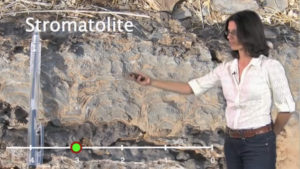
|
Microbial diversity, fossilized and modern microbes, metabolism evolution in microbes, rRNA phylogenetic tree of bacteria | 53:43 |
Hi-Res Subtitled: |
View Transcript | |
| Interpreting Molecular Fossils of Oxygenic Photosynthesis | 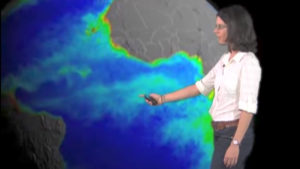
|
Evolution of oxygenic photosynthesis | 40:21 |
Hi-Res Subtitled: |
View Transcript | |
|
Session 3: Protein Design
David Baker talks about crowdsourcing science and how Foldit, an interactive protein folding program, allows individuals to predict the most likely fold for a protein. With: David Baker |
All Course Materials for this Session (Educators only) – Created by Aditya Anand and Lynn Wang |
|||||
| Introduction to Protein Design | 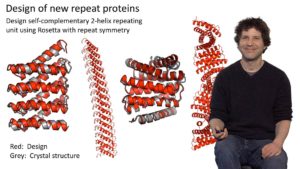
|
Protein 3D structural predictions, determining the structure of a sequence of amino acids, Rosetta@Home | 21:21 | Hi-Res Low-Res | View Transcript | |
| Design of New Protein Functions | 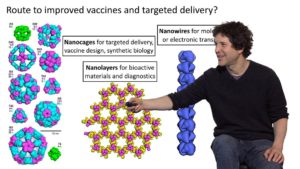
|
Designing new protein functions | 26:47 | Hi-Res Low-Res | View Transcript | |
|
Session 4: An Introduction to Polyketide Assembly Lines
Polyketide antibiotics include many of the most commonly used antibiotics in medicine today. Dr. Chaitan Khosla describes the modular enzymes that synthesize these antibiotics in a manner much like an assembly line. With: Chaitan Khosla |
All Course Materials for this Session (Educators only) – Created by Becky Anderson and Ben Barsi-Rhyne |
|||||
| An Introduction to Polyketide Assembly Lines | 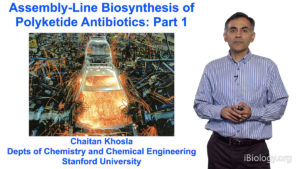
|
Polyketide antibiotics (e.g. erythromycin & rapamycin) synthesis | 35:45 |
Hi-Res Low-Res Subtitled: |
View Transcript | |
| Dissecting Polyketide Assembly Lines | 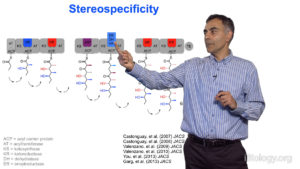
|
Studying polyketide assembly line enzymes in bacteria, producing novel polyketide products | 28:30 |
Hi-Res Low-Res Subtitled: |
View Transcript | |
| Vectorial Specificity of Assembly Lines | 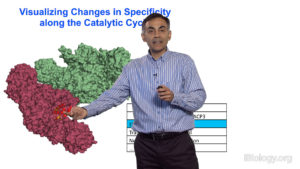
|
Vectorial specificity in polyketide synthesis pathway | 29:36 |
Hi-Res Low-Res Subtitled: |
View Transcript | |
|
Session 5: Nanofabrication via Structural DNA
In this session about nanofabrication and DNA origami, William Shih describes how DNA can be used as a building material to construct nanoscale objects. With: William Shih |
All Course Materials for this Session (Educators only) – Created by Karen Cheng |
|||||
| Nanofabrication via DNA Origami | 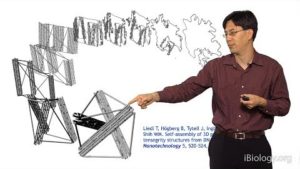
|
Using DNA to make nanoscale objects, DNA origami | 39:34 |
Hi-Res Low-Res Subtitled: |
View Transcript | |
| Nanofabrication via DNA Single Stranded Bricks | 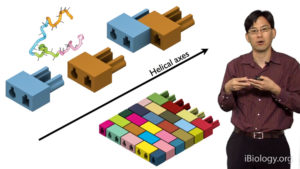
|
Using DNA bricks to make 3D nanostructures | 33:37 |
Hi-Res Low-Res Subtitled: |
View Transcript | |
| DNA-Nanostructure Tools | 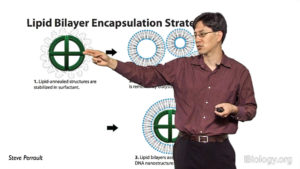
|
Uses of DNA-nanostructures | 40:40 |
Hi-Res Low-Res Subtitled: |
View Transcript | |
|
Session 6: Synthetic Biology and Metabolic Engineering
Kristala L. J. Prather explains that synthetic biology involves applying engineering principles to biological systems to build “biological machines." With: Kristala Prather |
All Course Materials for this Session (Educators only) – Created by Tess Veuthey |
|||||
| Introduction to Synthetic Biology and Metabolic Engineering | 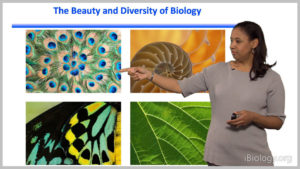
|
Introduction to synthetic biology, synthetic DNA | 26:11 |
Hi-Res Low-Res Subtitled: |
View Transcript | |
| Teaching an Old Bacterium New Tricks | 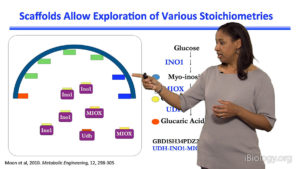
|
Engineering the production of glucaric acid from glucose in E. Coli | 38:36 |
Hi-Res Low-Res Subtitled: |
View Transcript | |
|
Session 7: Tissue Engineering
Sangeeta Bhatia explains when and why tissues are engineered and describes the challenges of tissue engineering. With: Sangeeta Bhatia |
All Course Materials for this Session (Educators only) – Created by Karina Perlaza and Brian Yang |
|||||
| Engineering Tissue Replacements | 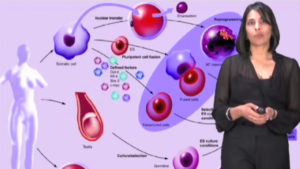
|
Introduction and challenges of tissue engineering | 39:03 |
Hi-Res Subtitled: |
View Transcript | |
| Microscale Liver Tissue Engineering | 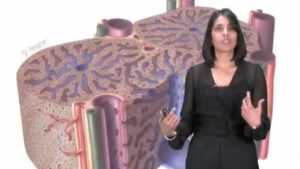
|
Developing an implantable, engineered liver | 29:59 |
Hi-Res Subtitled: |
View Transcript | |
|
Session 8: Controlled Drug Release Technology
Bob Langer gives an overview of controlled drug release technologies. With: Robert Langer |
All Course Materials for this Session (Educators only) – Created by Valentina Garcia and Lindsay Osso |
|||||
| Controlled Drug Release Technology | 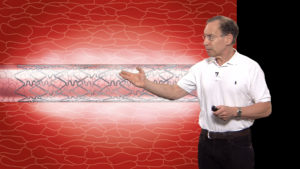
|
Plasma drug levels, optimizing drug release, drug release technologies | 37:44 |
Hi-Res Low-Res Subtitled: |
View Transcript | |
| Drug Delivery Technology: Present and Future | 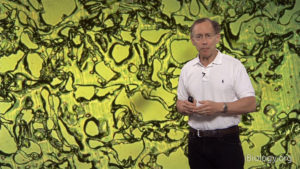
|
Drug release technologies, targeted drug delivery, drug delivery using microchips | 35:11 |
Hi-Res Low-Res Subtitled: |
View Transcript | |
| Biomaterials for Drug Delivery Systems and Tissue Engineering | 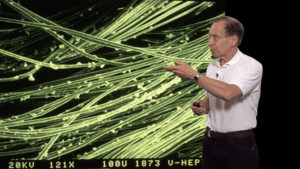
|
Drug delivery and medical devices | 26:50 |
Hi-Res Low-Res Subtitled: |
View Transcript | |
|
Session 9: Advancing the Treatment of Retinal Diseases
Robert Bhisitkul and Tejal Desai describe how treatment for retinal diseases and vision loss may be improved by efforts to develop implantable devices for drug delivery. With: Robert Bhisitkul, Tejal Desai |
All Course Materials for this Session (Educators only) – Created by Valentina Garcia and Lindsay Osso |
|||||
| Advancing the Treatment of Retinal Diseases | 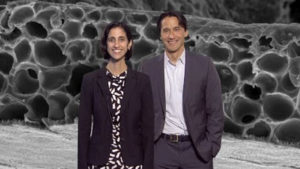
|
Retinal diseases, vision loss, implantable devices for drug delivery, age-related macular degeneration | 35:16 |
Hi-Res Low-Res Subtitled: |
View Transcript | |




